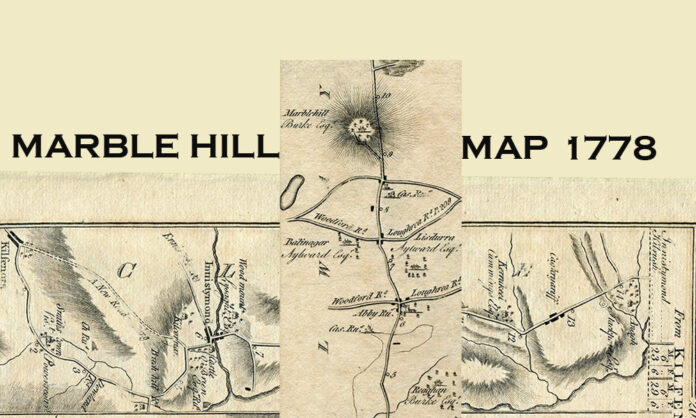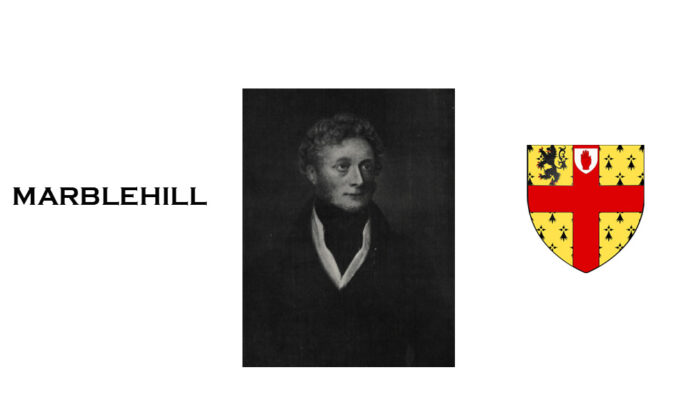A Glimpse into 1830s County Galway through the Lens of Terry Alts and Marble Hill
This article delves into a tumultuous event that unfolded in County Galway, Ireland, on April 4th, 1831. Drawing on court records, it sheds light on the robbery of firearms from Sir John Burke’s property in Marblehill, Ballynakill parish.
A Mob Descents on Marble Hill:
The central figure in this case is John Doogan, an employee of Sir John Burke. On that fateful Easter Monday, Doogan found himself facing a large mob, estimated to number between 300 and 400 men. Armed with an unsettling array of weapons – spades, pitchforks, scythes, and even guns – the mob descended upon Doogan’s house, threatening him with violence.
A Witness Account:
Another crucial perspective comes from Christopher McHugo, a resident of Derrybrien. While working in his field with employees, McHugo observed the growing mob heading towards Marblehill. He noted their diverse weaponry and the increasing size of the crowd, which swelled to an estimated 500-600 people. Interestingly, McHugo reported witnessing some of his own employees joining the mob voluntarily, highlighting the complex dynamics at play.
The Aftermath and a Costly Choice:
The mob stormed Doogan’s house, stealing firearms and ammunition. Despite the chaos, Doogan only recognized one individual in the mob – Connor Cotteen.
McHugo’s decision to identify Cotteen during the trial proved costly. He faced ostracization from the local community and threats to his safety. Fearing for his life, McHugo was forced to relocate to Galway town. This consequence underscores the tense atmosphere of the time.
A Glimpse into a Larger Story:
The court case surrounding the Marblehill robbery offers a glimpse into a period of unrest in 1830s Ireland. The Terry Alts, an agrarian secret society, were active during this time, and Cotteen’s involvement suggests a possible connection. Further research into the Terry Alts and the social conditions of the time would be necessary to fully understand the motivations behind the attack.
The verdant landscape of County Galway holds not only breathtaking beauty but also whispers of a turbulent past. This article delves into a specific period of unrest – the 1830s – through the lens of the Terry Alts agrarian movement and the grand estate of Marble Hill.
The Terry Alts and the Fight for Land:
The Terry Alts were a significant force in 19th-century Ireland. This agrarian protest movement emerged in County Clare and quickly spread to neighbouring Galway. Their primary grievance? Unfair land ownership practices. Tenant farmers felt burdened by high rents and insecure land tenure, leading to widespread frustration and calls for reform.
Marble Hill: A Symbol of Land Inequality?
While the exact role Marble Hill played in the Terry Alts movement remains unclear, its presence as a large, prosperous estate in the midst of tenant struggles cannot be ignored. The estate, then owned by Sir Henry Burke, likely represented the very land ownership system the Terry Alts challenged. Newspapers from the period might shed more light on any specific interactions between the movement and Marble Hill.
Beyond the Headlines: A Look at the Human Cost
While historical records often focus on events and leaders, it’s crucial to remember the human stories behind the unrest. Imagine tenant farmers in the shadow of Marble Hill, struggling to make ends meet and yearning for a more equitable system. The Terry Alts movement, despite its tactics, represented a desperate plea for change.
A Call for Further Exploration:
This glimpse into 1830s County Galway serves as a starting point for further exploration. Historical documents, local folklore, and archaeological evidence can all contribute to a richer understanding of this period. Perhaps further research can reveal the specific experiences of those involved in the Terry Alts movement near Marble Hill, offering a more nuanced perspective on this chapter in Irish history.
A Landscape Steeped in History:
The next time you visit County Galway, remember that the rolling hills and charming villages hold echoes of the past. From the grand estates like Marble Hill to the struggles of the Terry Alts, these lands whisper stories waiting to be uncovered. Understanding these historical events allows us to appreciate the resilience of the Irish people and the ongoing quest for social justice.






